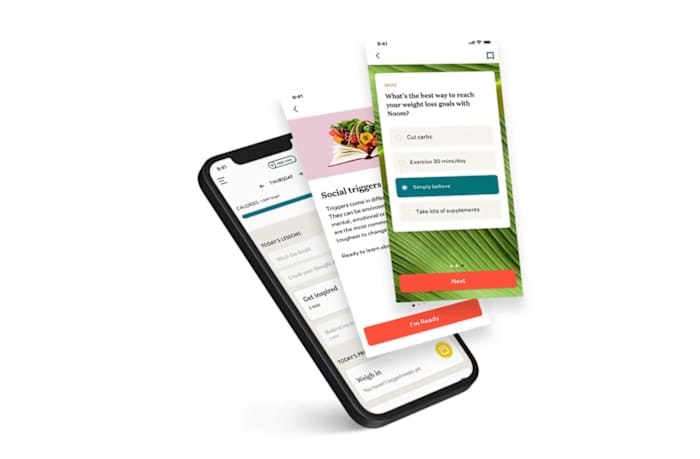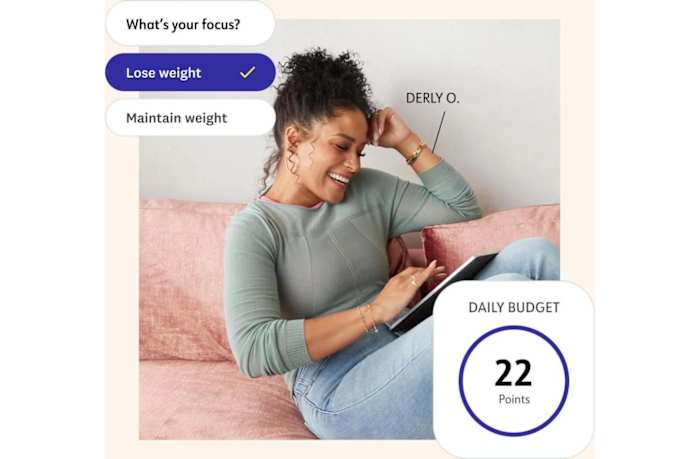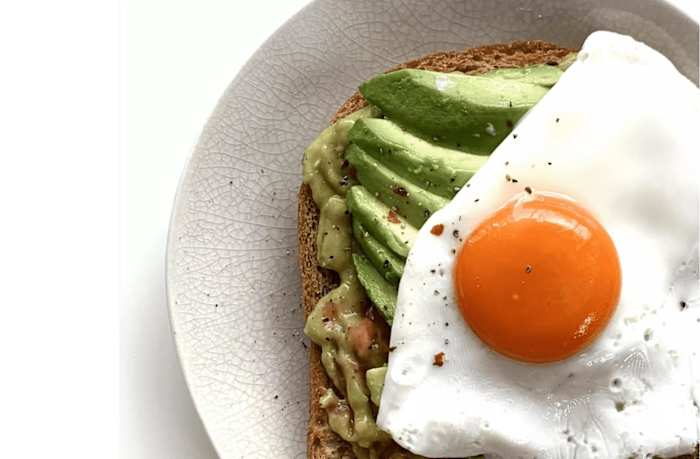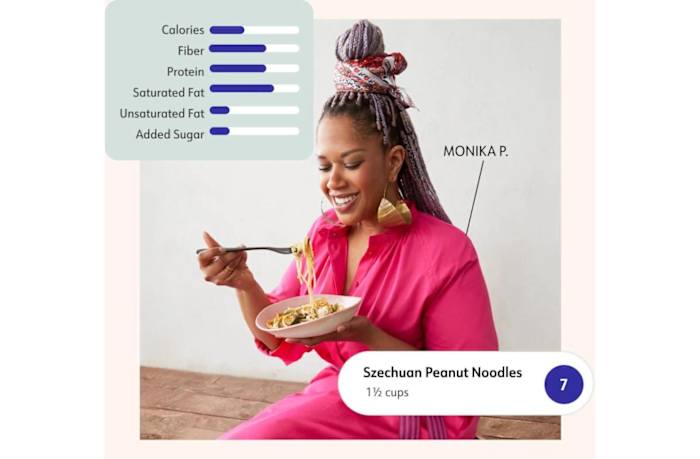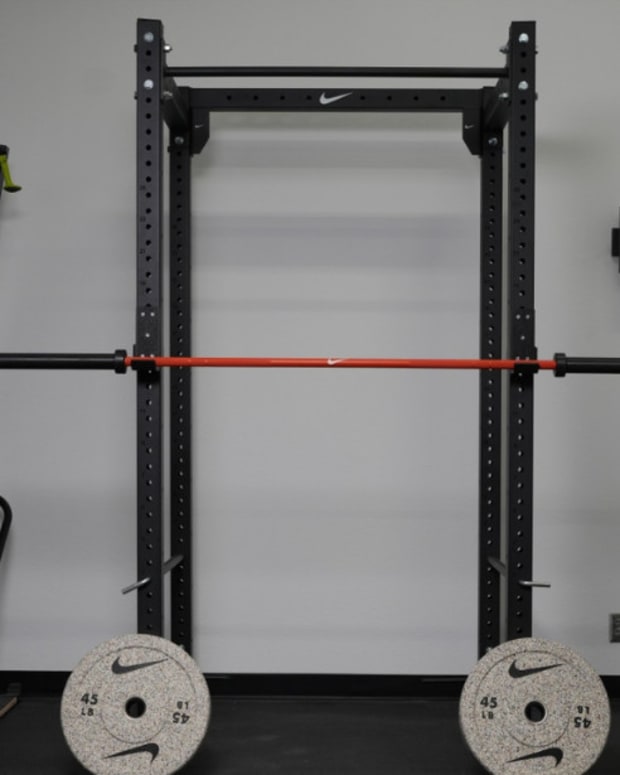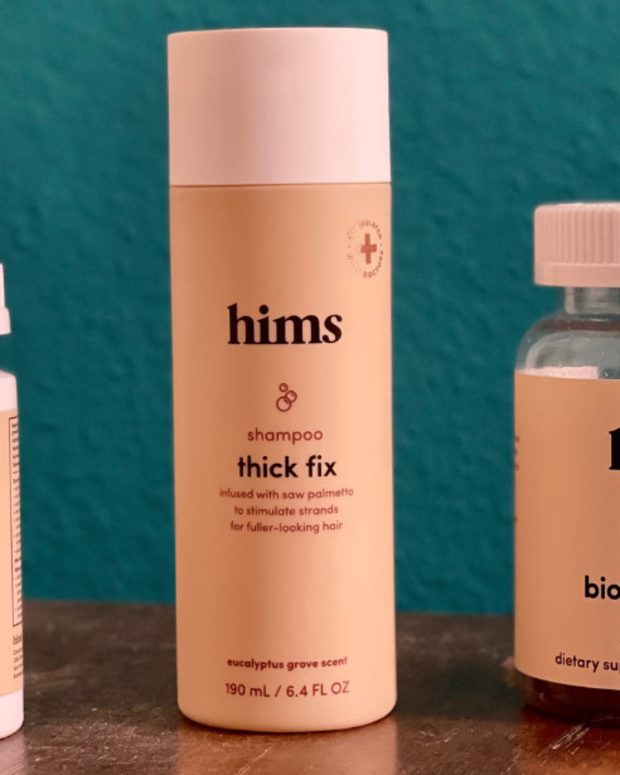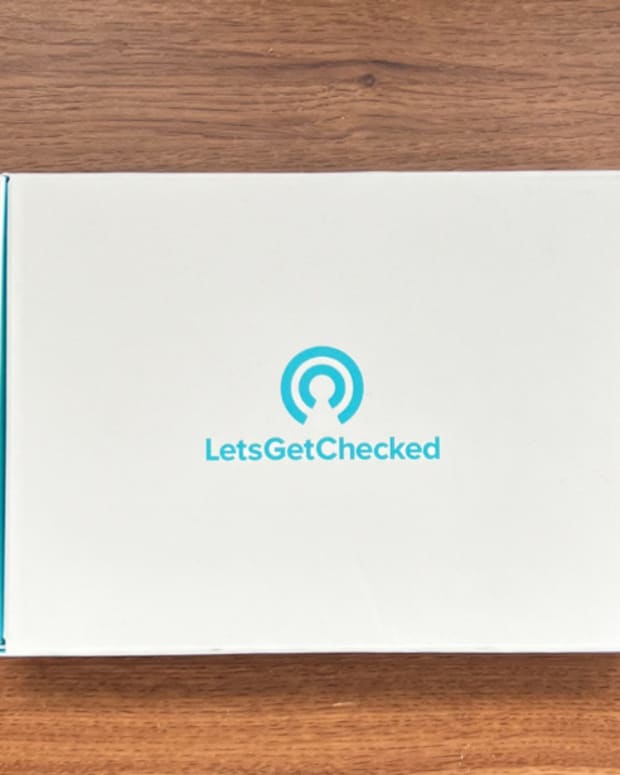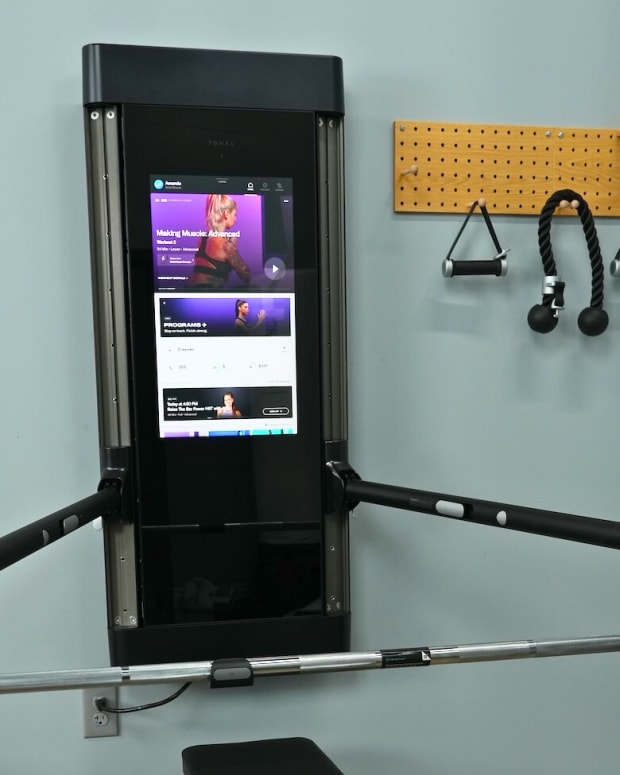The products featured in this article have been independently reviewed. When you buy something through the retail links on this page, we may earn commission at no cost to you, the reader. Sports Illustrated editorial staff are not involved in the creation of this content. Learn more here.
Joining a commercial weight loss program can be a smart and effective way to lose weight without developing your own diet plan that may or may not always work. A weight loss plan provides structure, guided eating and support systems that help you achieve your weight loss goals, while also teaching you how to make healthier choices. Although there are dozens of weight loss programs, nutrition apps and fitness apps on the market today, Noom and Weight Watchers are two of the most popular weight loss plans that millions of people subscribe to—and this reviewer has personally tried both.
Both programs are backed by expert-created diets that include food tracking, logging physical activity and other wellness features, but that’s where the two popular weight loss brands end their similarities. Noom and Weight Watchers operate on entirely different diet structures, and we’re here to explain exactly how those diets work and who they’re best for. Our comprehensive Noom vs Weight Watchers review will include a guide to both programs with their features, pros and cons, cost and more. We’ll also share everything you need to know before deciding which subscription weight loss program, if any, might be right for you.
What Is Noom?
Noom is a newer weight loss program that assigns colors to foods based on how calorie-dense they are. After you determine your calorie budget, you can then divide your foods up throughout the day, while making sure you stay within your red, yellow and green foods budgets (red foods, for example, are the foods you want to eat the least of, and you’ll get minimal calories to use on these food items). Noom also puts a major emphasis on teaching positive behavior change.
What is Weight Watchers?
WW, formerly Weight Watchers, is an award-winning weight loss program ranked fourth best overall diet by U.S. News that uses a points system to help members lose weight. All foods are assigned points, so you can technically eat what you want as long as you stay within your daily points budget. Weight Watchers also offers a robust WW community that pushes accountability.
Is Noom or WW Better for You?
While Noom and Weight Watchers have the same end-goal–to help guide members on their weight loss journeys–the diets and overall weight loss plans couldn't be more different. Noom, for example, utilizes a color-coding and calorie counting diet that divides up how many calories should be allotted to red, yellow and green foods. It also provides thorough education in each step of the process, encouraging members to read articles, complete interactive activities and take quizzes. This learning content is designed to teach members about the behavioral science behind eating habits and eating triggers, like emotional eating; therefore, we like to think of Noom as a crash course in the psychology of food, in addition to being a weight loss program.
Weight Watchers, on the other hand, goes for a totally different approach. Instead of using a calorie budget, it assigns members a daily points budget that they can divvy up amongst food choices. This diet is meant to be less restrictive since it encourages members to eat what they want, as long as they don’t go over their budget. While some foods are high in points, others have a low points value, and there are even zero-point foods that you can eat as much as you want. Yet one of the biggest features of Weight Watchers that sets it apart from Noom is its heavy emphasis on accountability. Weight Watchers encourages weekly weigh-ins online or in-person, and it boasts a robust WW Connect support group where members can find support.
While one diet isn't necessarily better for you than the other, Noom and Weight Watchers have their own appeal that draws members based on their interests. Those who like to diet on their own and maintain their own accountability might gravitate towards Noom, while people who thrive on the support of a weight loss community or network may like Weight Watchers more. Your preferred diet style may also influence which program feels like a better fit for you. If you’d prefer to eat your favorite foods in moderation without giving them up, Weight Watchers can help you do that. If you’re keen to learn about calorie density in foods and take daily lessons on the behavioral science behind eating, chances are you’ll benefit from subscribing to Noom.
How Noom Works
After you download Noom, you’ll be asked to take a quiz that gauges your weight loss goals, eating habits and lifestyle. From there, the Noom app will determine a custom calorie budget for you and ask you to track your food intake throughout the day. While no foods are off limits, you’ll be limited to how many red and yellow foods you’re able to eat, yet green foods (like veggies) can be eaten in plenty. The most calorie-dense foods are red, and the least-calorie dense foods are green. For example, most oat milks are rated yellow by Noom’s food rating system, while many whole grains are rated green. Oils, on the other hand, get a red rating in the system.
As you track your food and exercise, you can view your nutrient intake and see where you land in terms of protein, carbs, fat, sugar and vitamin intake, which can help you see if you’re getting too much or too little of something; this can be helpful if you need to monitor your sugar intake to manage blood sugar, for example, or eat less cholesterol if you have high blood pressure. In addition, you’ll be asked to check in and weigh yourself to make sure you’re staying on target.
Food and exercise diary aside, Noom puts a major focus on food education and teaching members about the behavioral science behind food, i.e. what leads to stress eating or social triggers that influence overeating. You’ll take lessons, read articles and also do quizzes to gauge what you’ve learned and haven't learned, which helps you advance to the next level. Noom coaches are also available for one-on-one coaching to help clients develop a healthy lifestyle. As of recently, Noom also launched the new Noom Mood program, a 16-week program that helps people tackle stress, boost their mood and improve their overall mental health.
Features
Noom’s features include a food diary with a color-coded food rating system, which has an extensive food database that can be broken down by brands if needed. You can also track your exercise, water intake and body weight. Noom includes a major educational component as well with lessons, quizzes, articles and more that teach healthy eating habits and the psychology behind food. Lastly, Noom offers personal coaching for one-on-one support on its app.
App
Noom is available for both Apple and Android. All of your tracking and lessons can be done on the Noom app, and you can also set up reminders to encourage you to check in daily.
Tracking food
As you log your foods, Noom’s database breaks down each food item into a color-coded system that includes red, yellow and green categories. Red foods are the most calorie-dense, which you should eat in small amounts, while green foods are the least calorie-dense and can be eaten in large amounts. Yellow foods, on the other hand, should be eaten in moderation. You can also view your nutrition breakdown to see both macronutrients and micronutrients. In addition, there’s a barcode scanner to scan and log food labels with, but it tends to be glitchy.
Fitness
Noom’s diary lets you track your exercises, which include both cardio and strength training. Depending on how many calories you burn working out, Noom will give you extra calories to eat throughout the day in addition to your set calorie budget. So, for example, if your calorie budget is 1,400 and you burn 200 calories doing elliptical exercise, Noom will raise your calorie budget for that day to 1,600. You can also check out the Noom blog for workout plans, but you won’t get a workout plan customized to your fitness goals; it will simply be a generic exercise guide.
Educational offerings
Noom’s educational offerings are an integral component of the Noom diet program. Noom lessons will teach you about calorie reduction and carb intake, in addition to emotional triggers that lead to overeating or other food habits that could be impacting your weight. These lessons are interactive, so don’t expect to sit there and read boring articles; instead, you’ll take quizzes, browse infographics and answer true-and-false questions to learn about the psychology of food.
Food options
Truthfully, you can eat what you want on Noom, as long as you stay within your calorie budget and the recommended amounts of red, yellow and green foods. Still, this science isn’t always precise, since almond butter, for example, is classified as a red food, but isn’t necessarily bad for you (unless you eat a whole jar). Red foods are also very, very limited, such as 200 calories, which a spoonful or two of almond butter alone can eat up for the entire day. If you eat a lot of healthy fats, you may find the Noom food rating system a little restrictive, and this reviewer still lost weight using Noom and going over the red foods calorie budget. However, I didn’t push it too far, and I did keep my green foods and yellow foods in check while using the program.
How Weight Watchers Works
Weight Watchers operates on a SmartPoints system where all foods are assigned points based on their calories, saturated fat, sugar and protein. You’ll also get a WW PersonalPoints daily and weekly points budget based on your current weight, weight loss goals, age, height and gender. Foods that aren’t as healthy or higher in calories will get a higher points ranking, while healthier foods will get a lower points ranking (encouraging you to eat more nutritious and lower-calorie foods). Then, there is also a fairly extensive list of zero-point foods, which are foods that you can eat as much as you want of. This includes fruit, fat-free yogurt, lean poultry and tofu.
Weight Watchers also encourages weekly weigh-ins, which you can do on your own on Zoom or at a Weight Watchers studio. You’ll also have access to virtual or in-person coaching and other wellness workshops, in addition to obé Fitness workouts, which are included in the cost of your membership; these are available in the WW app and digital plan. Offerings include on-demand exercise classes suitable for all levels that include cardio, strength training, pilates and more. Since Weight Watchers puts a major emphasis on accountability to keep you motivated and on track with your weight loss goals, you can expect a community, team effort feel to the program.
Features
Weight Watchers allows you to track your SmartPoints intake, sleep, physical activity and water intake. Like Noom, you can also use the WW app to scan barcodes of foods to log into your food diary. If you’re stuck on what to make for breakfast, lunch or dinner, you can also use the app to create recipes based off of food items and ingredients that you already have at home. You can take advantage of personal coaching in-person or online as well, or watch pre-recorded sessions if a live session doesn’t work for you. Lastly, there is also 24/7 customer support.
App
Weight Watchers has a WW app available on both Apple and Android. The app allows you to log your points intake, track your weight, take on-demand fitness classes and meet virtually with a personal coach. You can also use the app to attend live workshops and join virtual meetings.
Tracking food
Weight Watchers uses a points system to track food. You’ll be allotted a PersonalPoints budget that determines how many points you can eat per day. Each food is assigned a number of points based on WW’s SmartPoints system, and there are also zero-point foods as well that you can eat as much as you want of. While buying Weight Watchers branded food isn’t necessary, their custom snacks and meals (which are available online or in grocery stores) are already broken down into points, which can make tracking meals with multiple ingredients much easier.
Fitness
Weight Watchers has partnerships with several fitness brands, including obé Fitness, for example, which allow you to utilize their programs or on-demand workouts as part of your membership. These classes include cardio, strength training, pilates and more. You can also view several workout guides and articles on the WW website with exercise tips and ideas.
Educational offerings
Unlike Noom, which has you work individually on your education and lesson plan, Weight Watcher’s educational offerings revolve around its community. You’ll attend workshops and meet with other members online or in-person to learn more about living a healthy lifestyle.
Food options
Similar to Noom, no foods are off limits on Weight Watchers, but you’ll definitely want to make healthier food choices. This can not only teach you healthy eating habits, but also allows you to eat more throughout the day so you don’t max out your PersonalPoints budget too fast. You can make your own meals and plug in your ingredients, or eat Weight Watchers branded meals and snacks that already have their points assigned. WW also has a partnership with Blue Apron to provide members with chef-designed recipes that they can recreate at home and easily log.
Noom and Weight Watchers Cost
While Weight Watchers runs various promotions throughout the year that may raise or lower its cost, the program currently has three membership options at the time of this article. The best deal is to purchase a six-month membership, which gives you your first two months free and then costs $23 per month for the remainder of the subscription (total savings of $66). The mid-tear is a three-month membership that costs $15 per month with one month free, giving a total savings of $44. The most expensive plan is a one-month subscription, which costs $43.
Noom offers a free seven-day trial period. After the trial is over, the program costs $70 per month, or $159 for a three-month subscription. The Noom cost is significantly more expensive than Weight Watchers and comes with less features (especially when it comes to partnerships that offer on-demand fitness classes and chef-inspired recipes), but if you prefer to diet on your own and don’t like the community feel of Weight Watchers, the extra fee may be worth it. Noom is also much simpler and puts a greater emphasis on education, which I personally preferred.
Community Support on Noom and Weight Watchers
Weight Watchers is all about community. In fact, if you want to diet alone and don’t want or like that extra push of accountability, Weight Watchers’ community support may feel overwhelming (as was the case for me). While you can definitely use Weight Watchers solo and steer clear of workshops or meetings, you may not get the full benefits of the program and instead might want to consider a more solo or on-your-own weight loss program like Jenny Craig or Nutrisystem.
Noom also includes groups where users can chat with other Noom members, but these aren’t integral to the program and are offered as sort of an after-thought or bonus feature. Noom, however, does give members the ability to meet one-on-one with a Noom coach for support.
How Effective is Noom Compared to Weight Watchers for Weight Loss?
Noom and Weight Watchers can both promote weight loss, but you may want to lean towards one program or the other depending on your personal needs and interests. Those looking for personal coaching or for that extra push of accountability by being a part of a community may benefit more from Weight Watchers, while solo dieters or people eager to learn healthy habits and the science behind eating patterns may find Noom more effective for their taste. If you’re still unsure which program (or if any of these programs) is best-fitted for you, we suggest consulting registered dietitians or nutritionists to identify a plan that suits your health and style.
Noom vs WW FAQs
Here’s everything else there is to know about Noom and Weight Watchers.
How do Noom and WW differ?
Noom and Weight Watchers differ by their diet structure, with Noom using a color-coding approach to foods and Weight Watchers using a points system for foods. Noom also puts a greater emphasis on education and learning about eating behaviors, while Weight Watchers makes community and accountability an integral part of its offerings. In addition, Weight Watchers offers branded foods (though these aren’t necessary to eat), while Noom doesn’t.
What is the success rate of WW? Of Noom?
According to a 2017 study that included a test group with obesity, 57 percent lost weight on Weight Watchers compared to 42 percent enrolled in another weight loss program. Meanwhile, a 2016 study of nearly 36,000 Noom users discovered that about 78 percent of participants lost weight on the program.
What is the average amount of weight lost on Noom?
According to Noom, the average weight lost on its diet is one-to-two pounds per week, which the CDC recommends as the healthiest cadence for losing weight. Still, how much you lose will ultimately depend on your age, health, diet, activity levels and metabolism, so you may lose more or less depending on your personal traits and lifestyle (therefore, don’t be discouraged if you don’t hit these numbers, because everyone is different).
How long do most people stay on Noom?
The Noom diet is designed to last 16 weeks, but you can buy up to a year’s worth of service to stay on the diet for an extended period of time. Still, if 16 weeks is too much or you’re just trying to lose a couple of pounds, there’s nothing wrong with sticking to the diet for four or eight weeks.
Does Weight Watchers work?
Yes, Weight Watchers actually works-and research shows it works better than other weight loss programs. A 2015 study determined that Weight Watchers demonstrated the most efficacy in helping people achieve modest weight loss when compared to other commercial weight loss programs. Further research shows that the WW program can provide clinically meaningful weight losses, and ironically also discovered that adding behavioral weight loss treatment (similar to the psychological approach of Noom) didn’t provide further weight loss benefits.
Does Noom work for all ages?
Noom recommends its healthy eating program for users aged 14 or older. Luckily, Noom content is very simple and easy to digest, so even younger users can benefit and learn from its lessons. The Noom app is also straightforward and simple to use, making it user-friendly for most ages.
Do Noom and WW have meal plans?
Noom doesn’t offer meal plans, but instead encourages Noom users to shape their own diet as they learn more about healthy foods and eating habits. While Weight Watchers doesn’t come with a meal plan, you can check out sample menus on their “Eating on WW” series, which offer starter meal plans that consist of healthy dishes and snacks for different lifestyles and interests.
Final Thoughts
Noom and Weight Watchers are both loaded with features that help make their diets successful, but our bottom line in our Noom vs WW review is that Noom has the upper edge. Not only does the Noom diet actually help you lose weight, but it teaches you about the science and behaviors that lead to stress eating and other unhealthy eating habits. This way, you can walk away from Noom not only a few (or several) pounds lighter, but armed with knowledge to help you make healthier choices after your diet program is complete—and therefore, keep the weight off.
Prices are accurate and items in stock as of publish time.

